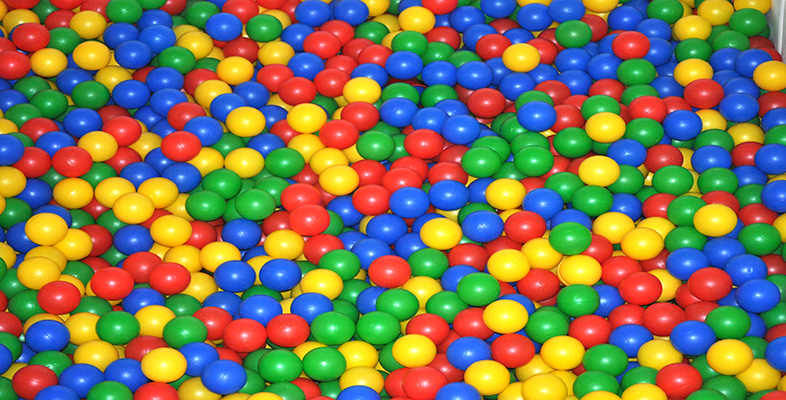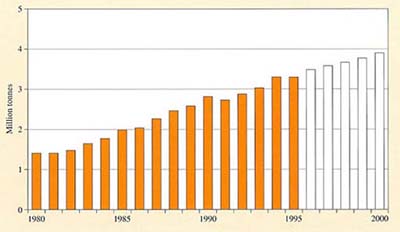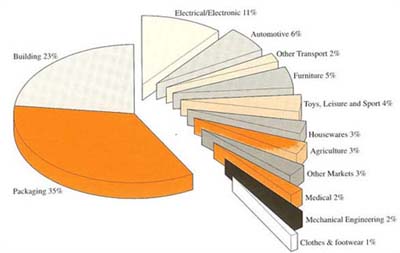1 Polymer materials
1 1The growth of poymers
Polymers, or materials composed of long molecular chains, are now well-accepted for a wide variety of applications, both structural and non-structural, and for mass-manufactured as well as one-off speciality products. The growth in their use has continued in the last two decades or more, despite the effects of several recessions in industrial activity (Figure 1). In the same period the demand for traditional materials like metals, ceramics and glasses has remained static or even fallen. Steel usage in the UK, for example, has fallen from about 14 million tonnes in the 1970s to about 12 million tonnes in the 1990s, while that of aluminium has stayed at about 600 000 tonnes. The growth in use of polymers is forecast to continue into the next millennium, with consumption approaching 4 million tonnes in the UK. In one of the most active areas, that of thermoplastic polymers, consumption is divided between packaging, building, and a wide range of other applications (Figure 2).


